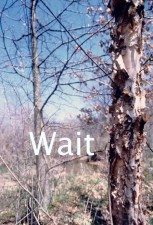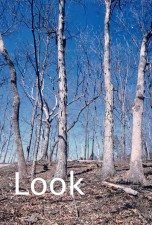Location: Vinelhaven Maine & NYC
Feminist ideas then & now are linked/changed expanded/contracted? How things have changed in ecoart since that panel in 1999….or what internet and other extended forms of communication since then have changed the field.
 In 1999, at the dawn of the conservative decade,for the College Art Association conference in Los Angeles, Jo Hanson, Susan Leibovitz Steinman and myself co-chaired a panel:“OUT OF THE MAINSTREAM, INTO THE MAINSTREAM: The State of the Art of Environmental Art.” Panelists (with their affiliations at the time) included Tim Collins, Reiko Goto (both now in England), and Bob Bingham (who did not present), collaborators at the School for Creative Inquiry, College of Fine Arts, Carnegie Mellon University, Pittsburgh; Joyce Cutler-Shaw, Artist in Residence at the UC San Diego School of Medicine; Erica Fielder Mendocino,A ; Lynne Hull, Ft Collins, CO; Kathryn Miller, Pitzer College, Claremont CA; Beverly Naidus, Shelburne Falls, MA (now at University of Washington at Tacoma); Baile Oakes, Westport CA; Patricia Sanders, Newark CA (now in Utah); and Roy Staab, West Allis WI.
In 1999, at the dawn of the conservative decade,for the College Art Association conference in Los Angeles, Jo Hanson, Susan Leibovitz Steinman and myself co-chaired a panel:“OUT OF THE MAINSTREAM, INTO THE MAINSTREAM: The State of the Art of Environmental Art.” Panelists (with their affiliations at the time) included Tim Collins, Reiko Goto (both now in England), and Bob Bingham (who did not present), collaborators at the School for Creative Inquiry, College of Fine Arts, Carnegie Mellon University, Pittsburgh; Joyce Cutler-Shaw, Artist in Residence at the UC San Diego School of Medicine; Erica Fielder Mendocino,A ; Lynne Hull, Ft Collins, CO; Kathryn Miller, Pitzer College, Claremont CA; Beverly Naidus, Shelburne Falls, MA (now at University of Washington at Tacoma); Baile Oakes, Westport CA; Patricia Sanders, Newark CA (now in Utah); and Roy Staab, West Allis WI.
It was one of the largest panels ever assembled for CAA, held in one of their largest rooms and generated a lively discussion afterwards. Then, notably, we had to strain to balance the panel with sufficient men.
 The e-preparation for that panel had enduring consequences. It launched the ecodialog list serve, http://www.ecoartnetwork.org/ which now includes more than 100 ecological art practitioners world wide. We engage in closed critical dialogs on issues related to ecological art and outreach. In addition to the original 1999 panelists, the ecodialog grew to include, among others: Tricia Watts and Amy Lipton of ecoartspace.org; Don Krug at UBC Vancouver; David Haley In the UK; Shai Zakai in Israel; Betsy Damon working in China; Sam Bower, director of greenmuseum.org; Norwegian film maker Eva Bakkeslett,; Jackie Brookner; Helen & Newton Harrison; Jan van Boekel; and writers such as Suzaan Boettger and Linda Weintraub.
The e-preparation for that panel had enduring consequences. It launched the ecodialog list serve, http://www.ecoartnetwork.org/ which now includes more than 100 ecological art practitioners world wide. We engage in closed critical dialogs on issues related to ecological art and outreach. In addition to the original 1999 panelists, the ecodialog grew to include, among others: Tricia Watts and Amy Lipton of ecoartspace.org; Don Krug at UBC Vancouver; David Haley In the UK; Shai Zakai in Israel; Betsy Damon working in China; Sam Bower, director of greenmuseum.org; Norwegian film maker Eva Bakkeslett,; Jackie Brookner; Helen & Newton Harrison; Jan van Boekel; and writers such as Suzaan Boettger and Linda Weintraub.
There are many more men involved in the field, but it is still dominated by (under or non-paid) women, most of whom remain critically under-represented in the mainstream. The mainstream is still in love with Andy Goldsworthy and still confuses Eduardo Kac with work that is environmentally activist. The media doesn’t help here. Everything from an assembly of rocks on the beach with a kitsch reference to Robert Smithson to body work is designated ecological and a convincing argument can be made that it is. What we needed in 1999 and still don’t have, is a really thoughtful, informed critical analysis of the contemporary field, that recognizes the unique contribution of feminist artists.
But in 2009, when Susan and I attended the CAA conference in Los Angeles, there were so many panels on ecological and environmental art, many including interesting practitioners I had never met before, that I couldn’t attend one of the most important of those panels. I was presenting my own work as an ecological artist on Ellen Levy’s panel, “Proof” at the same time as a panel that very much interested me and included close colleagues, also presenting on ecological art. The panels were attended by a movable feast posse of (women) ecological artists in town for the convention, all from the ecodialog, including Tricia Watts, Carol Gigliotti, Ruth Wallen, Ellen Levy, Andrea Polli, Lillian Ball as well as Susan and myself. We gathered steam and drew others into our wake. But we also noticed that the term, ‘ecological art’ is being transformed out of our control, not just in terms of familiar green washing, but to be drained by curators of the pesky activist element.
 In the Obama age, things look environmentally brighter in the short run. The desperate urgency I felt during the Bush era is slightly muted. I see many more people, especially young people, from 350.org to people coming up, as Eve Mosher, doing interesting work. There are more men engaged and many of those men are respectful of the contributions of women. But I also see that testosterone still seems to gain over the more transparently collaborative approach of women.
In the Obama age, things look environmentally brighter in the short run. The desperate urgency I felt during the Bush era is slightly muted. I see many more people, especially young people, from 350.org to people coming up, as Eve Mosher, doing interesting work. There are more men engaged and many of those men are respectful of the contributions of women. But I also see that testosterone still seems to gain over the more transparently collaborative approach of women.
Still, the genre has grown sufficiently that it is possible to define genres within the genre. An example of the latter would be those who work as social activists, as Beverly Naidus vs others who collaborate intensively with scientists, as myself. What is common to all the artists under the umbrella I personally approve of, besides high professional standards, is a commitment to a green agenda and a distinctly activist interest in policy matters that advance that agenda. There is great talk now of the value of collaborative teams and innovation but I have yet to see that applied sustainably to ecological artists, the very group best equipped to contribute effectively to those advances.
[All artwork by Aviva Rahmani, 2002]
WEAD MAGAZINE ISSUE No. 1, CREATING CONNECTIONS
Published August 2010
